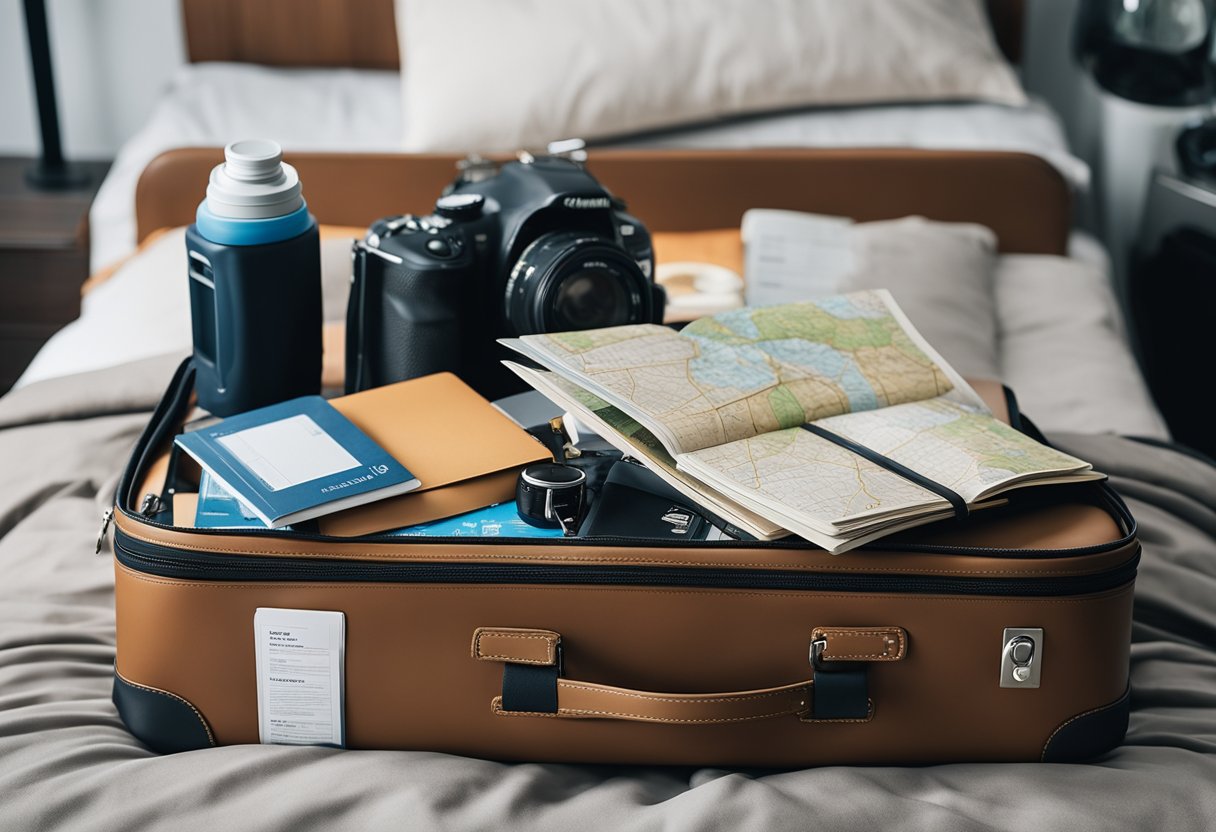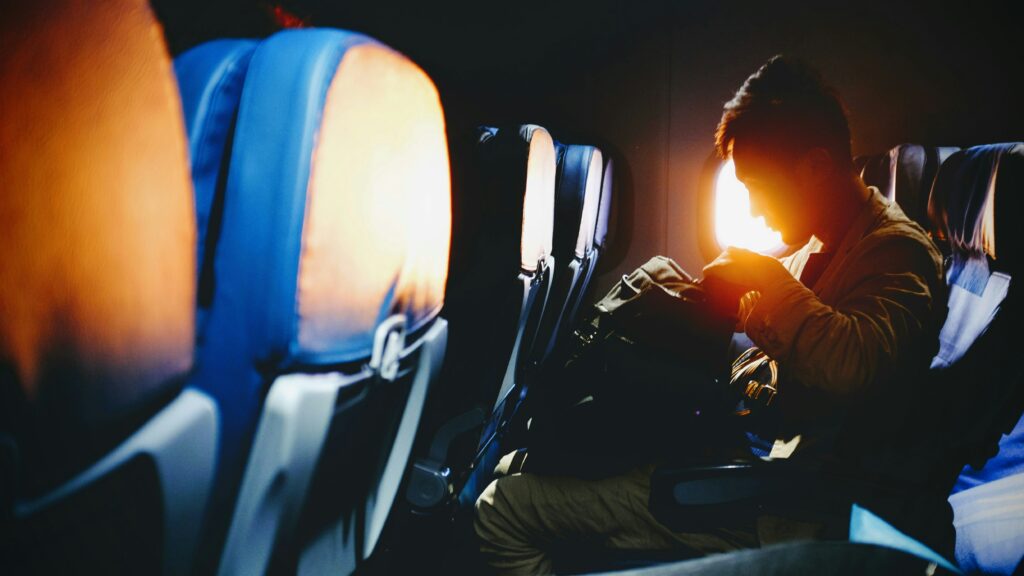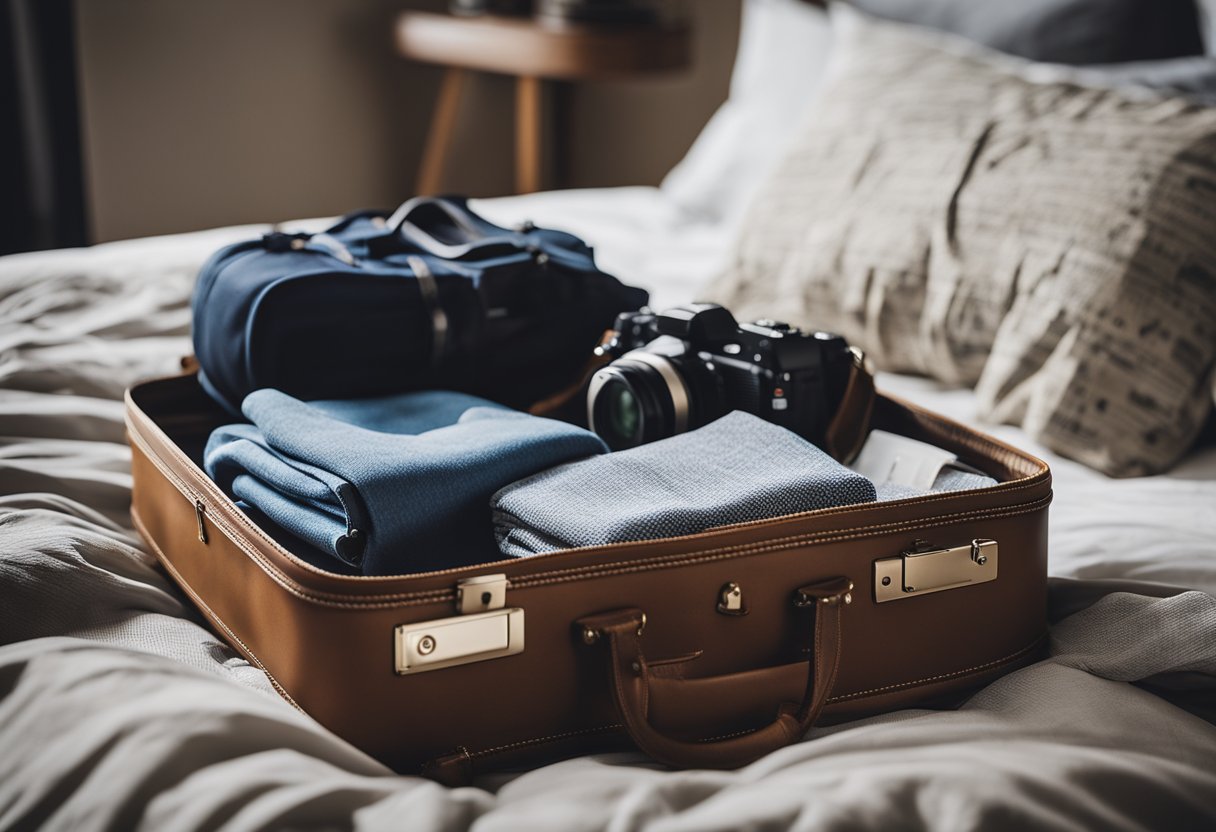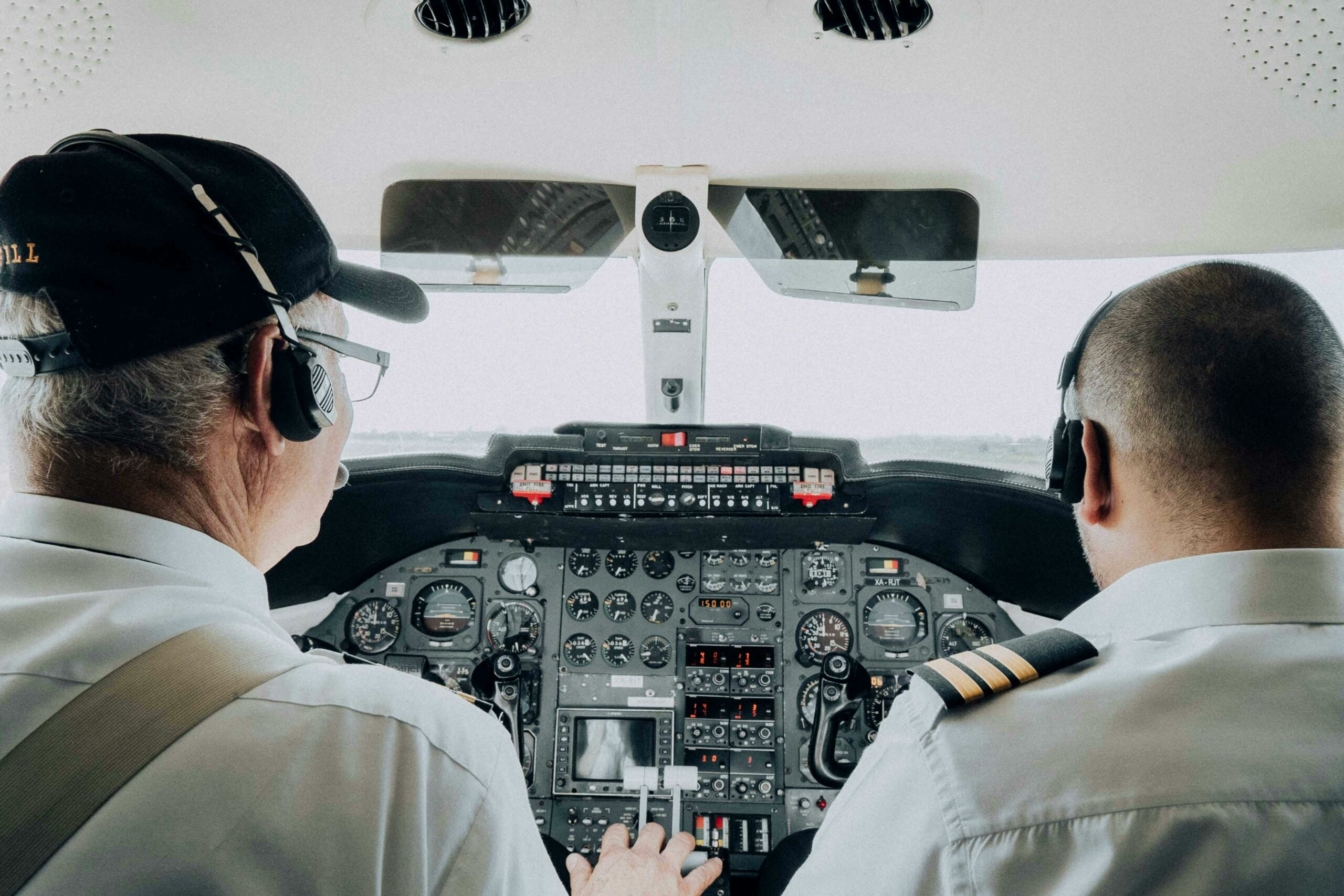Useful Tips for Solo Travelers: Navigating Air Travel with Confidence

Solo travel by air can present a unique set of challenges and opportunities. For individuals embarking on their first solo flight, preparation is key to a successful and enjoyable journey. Confidence can be built through proper planning and acquiring knowledge of what to expect. Solo travel invites a traveler to immerse themselves in the new environments they encounter while maintaining a sense of security and peace of mind.
To ensure a smooth experience when flying alone, there are several useful tips to consider. These range from practical advice on safety and navigating airports to strategies for staying entertained during long flights. Being aware of one’s surroundings, keeping important documents easily accessible, and understanding airport procedures goes a long way in reducing stress.
Engaging in solo travel also provides the chance for personal growth and reflection. It allows travelers to set their own pace and itinerary, giving them complete control over their experience. By following thorough and well-considered advice, solo travelers can enhance their journey and make the most of their time in the sky.
Preparing for Your Solo Trip

Embarking on a solo journey requires meticulous planning and attention to detail to ensure a smooth and enjoyable experience.
Researching Your Destination
It’s crucial to understand the local culture, language, and safety norms of one’s destination. Travelers should investigate common tourist scams to remain vigilant. It’s advisable to learn key phrases in the local language to facilitate basic communication.
Travel Documents and Security
Safety begins with ensuring that all travel documents, including passport and visas, are up to date and secure. One should make digital and physical copies of important documents in case of loss or theft. Travel insurance is a must-have for unexpected events ranging from medical emergencies to trip cancellations.
Packing Essentials
Packing for a trip should revolve around efficiency. Making a list of essentials and sticking to it prevents over-packing. Electronics should be accompanied by appropriate chargers and adapters. Always carry essentials in the carry-on to avoid inconvenience in case the checked luggage is delayed or lost.
Booking Accommodation
Secure accommodation in advance, focusing on guest safety and location convenience. Options include hotels, hostels, or rental apartments with positive reviews and proximity to public transport. One’s budget plays a significant role in the choice of accommodation.
Managing Finance and Budget
A clear budget is essential for enjoying a trip without financial worries. Consider daily spending limits and anticipate costs for attractions and transit. Notify banks of travel plans to avoid card blocks and determine if travel cards are a more secure option. Access to emergency funds is important for unforeseen circumstances.
By focusing on these key areas, travelers can set the stage for a memorable and stress-free solo adventure.
At the Airport

At the airport, a solo traveler’s focus should be on efficiency and safety during check-in, security screening, and navigating the complex airport space. They will interact with various personnel, including flight attendants and TSA agents, who are integral to the travel process.
Check-In and Security Procedures
When a traveler approaches the check-in counter, they should have their identification and flight information readily accessible. It’s essential to adhere to the airline’s carry-on restrictions to avoid any last-minute luggage issues.
- Preparation: Ensure all travel documents are in order.
- Carry-on: Verify size and weight limits to comply with airline policies.
Once at the TSA checkpoint, a traveler must be prepared for airport security protocols, which include removing shoes, belts, and jackets, as well as placing electronics in separate bins.
- TSA Guidelines: Follow the TSA’s 3-1-1 liquids rule for carry-on bags: containers must be 3.4 ounces or less, all in one quart-sized bag, one bag per traveler.
Navigating Airport Facilities
Navigating the airport efficiently involves understanding the layout and amenities offered. Many airports have signs and digital displays to help passengers find gates, restrooms, and dining areas.
- Maps and Apps: Use the airport’s maps or download their app for real-time information.
- Facilities: Locate essential services such as charging stations, restrooms, and help desks.
Interacting with Flight Attendants and TSA
During the journey through the airport, travelers often need to communicate with flight attendants and TSA personnel. Being polite and cooperative can facilitate a smoother interaction.
- Flight Attendants: They can provide information about boarding procedures and inflight services.
- TSA Agents: They ensure safety and security. Following their instructions quickly and respectfully is paramount for a hassle-free security check.
Boarding and the Flight Experience

Boarding and settling in for a flight, especially on a long-haul journey, requires strategic seat selection and measures for comfort. Travelers should focus on managing their well-being through hydration, nutrition, and relaxation.
Selecting the Best Seat
For solo travelers, selecting the right seat is crucial for comfort. An aisle seat allows for easy access to move around the cabin, which is beneficial for stretching legs on a long-haul flight. On the other hand, a window seat offers uninterrupted views and a side wall to lean against for sleeping. Travelers should aim to book their seat in advance to avoid being assigned the often less desirable middle seat. Consider the proximity to the lavatories and the balance between a smooth ride and quick deplaning when choosing your seat.
Entertainment and Relaxation
Solo travelers can ensure a pleasant flight experience by preparing their own entertainment and relaxation tools. Most airlines offer in-flight entertainment, but bringing a personal device loaded with movies, music, or books provides a backup if the system is down. Noise-cancelling headphones are a solo traveler’s ally against cabin noise. For rest, a neck pillow, eye mask, and a pair of comfortable socks can make it easier to sleep. Interacting with flight attendants to request blankets or ask about the entertainment options is also advised.
Staying Hydrated and Nourished
Staying hydrated is key on any flight, particularly for solo travelers on long journeys. Carrying a refillable water bottle helps maintain hydration levels without waiting for beverage service. Snacking is also important; packing one’s own snacks ensures that preferred and healthier options are available. Solo travelers can stow a personal item under the seat in front, providing easy access to water and snacks throughout the flight. It’s also beneficial to briefly walk around the cabin when safe to do so to promote circulation.
Safety and Comfort While Flying Solo

Traveling alone can present unique challenges, particularly when it comes to maintaining personal safety and ensuring comfort. Adopting specific strategies can greatly enhance one’s solo flight experience.
Personal Security Strategies
Ensuring personal security starts with remaining aware of one’s surroundings. Solo travelers should always keep important documents such as passports and identification in a money belt or a secure, hidden pocket. When sleeping in transit, it is advisable to use a scarf or a small lock to secure zippers on luggage to oneself, discouraging theft.
- Avoid isolating situations: Stay in well-lit, populated areas while waiting.
- Information sharing: Ensure someone knows your flight details and itinerary.
Keeping Your Belongings Safe
The safety of personal belongings is paramount. Invest in TSA-approved locks for luggage and always keep carry-on items in sight. For digital safety, utilizing a VPN on one’s phone or laptop helps protect personal information on public Wi-Fi networks.
- Under-seat belongings: Keep bags under the seat in front rather than overhead for easy monitoring.
- Valuables: Carry essential items like credit cards and cash in separate compartments.
Creating a Comfortable Space
Comfort is crucial for a pleasant solo flying experience. Pack a small kit of toiletries including sanitizer, facial wipes, and a toothbrush for freshening up. A versatile scarf can serve as an extra layer or makeshift pillow, enhancing physical comfort during the flight.
- Layered clothing: Regulate body temperature easily by adding or removing layers.
- In-flight turbulence: Familiarize yourself with expert analyses on turbulence discomfort to alleviate concern.
Arriving at Your Destination

Upon landing, a traveler’s priority is to efficiently navigate the airport, secure transportation, and orient themselves in their new surroundings. These steps ensure a smooth transition from the airport to exploring the destination.
Navigating Airport Arrival
Airports can be complex, but one can move through them with ease by following signage and using available maps. Travelers should locate baggage claim, customs, and exit points. They should also be aware of facilities such as currency exchange and tourist information desks.
Transportation to Your Accommodation
Options:
- Public Transport: Often the most cost-effective option. It’s essential to have local currency ready for ticket machines and recognize the right lines or routes to take.
- Taxis or Ride-Share Services: More expensive but direct. Travelers should be prepared with the address and ideally a map screenshot.
- Airport Shuttles: Some accommodations offer their shuttle service; it’s worth checking beforehand.
First Steps in a New City
Upon arrival at their accommodation, travelers should secure any valuables, and take time to familiarize themselves with their immediate surroundings by walking or consulting maps. Interacting with locals can provide valuable insights and updated directions to points of interest.
Staying Connected and Networking
For solo travelers, maintaining connections and building a network can greatly enhance the traveling experience. Technology, local interactions, and group activities are pivotal in achieving this.
Using Technology Wisely
Travelers should secure a local SIM card upon arrival to gain access to local networks, which tend to be more reliable and cost-effective than roaming services. When relying on public WiFi, it’s prudent to use services like NordVPN to protect personal data. Maintaining a digital journal can also help keep memories organized and share experiences with others.
- Local SIM cards: Often available at airports or local shops.
- VPN services: Encrypts internet connection for secure use of public WiFi.
Engaging with Locals and Travelers
Interactions with locals can offer insights into the culture and hidden gems of a destination. Travelers are encouraged to converse with residents during public transportation journeys or when dining. Hostels provide a social hub for meeting fellow travelers and can be a valuable resource for recommendations.
- Public Transportation: A place to meet locals who can share insights about the area.
- Hostels: Offer communal areas to connect with other travelers.
Participating in Group Activities
Solo travelers can find community through various group activities. Joining walking tours is an effective way to see sights while meeting people with similar interests. Platforms like Meetup can help one find local events or groups that cater to a range of interests and activities.
- Walking Tours: Typically led by locals, a chance to learn and meet people.
- Meetup: Use to find local events and groups during travel.
Embracing the Solo Travel Lifestyle
Solo travel offers unparalleled freedom and opportunities for self-discovery. It pushes individuals out of their comfort zone, fostering growth in confidence and self-reliance.
Dealing with Loneliness and Anxiety
Solo travel can sometimes lead to feelings of loneliness and anxiety, especially during long international flights or when sitting alone in private rooms. To mitigate these feelings, solo travelers should:
- Keepin touch: Regular contact with family and friends can be comforting.
- Starting conversations: Engaging with locals and fellow travelers can lead to unexpected friendships.
- Joining group tours: Participating in group activities, like a European city tour or an Asian hiking adventure, helps in connecting with like-minded individuals.
Personal Growth and Discovery
Traveling solo is a powerful tool for personal development. Here’s how travelers can enhance their journey of self-discovery:
- Embrace being alone: Reflecting while exploring new places cultivates self-awareness.
- Learning to navigate: Figuring out public transportation or finding the best backpack for a journey instills a sense of achievement.
- Build confidence: Overcoming challenges, like dealing with the anxiety of flying, can be improved by using a minute by minute accurate turbulence forecast.
Through these practices, solo travelers can turn their solo expeditions into rewarding experiences replete with growth and rich, personal discoveries.

